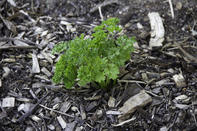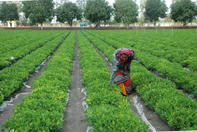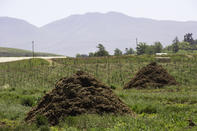The use of mulch in a garden or on a farm can greatly benefit the overall health of the soil and crops. Mulched soils have fewer weeds, are more drought-resistant than bare soil and plants grow better.

What is Mulch?
Mulch is a material placed on the soil surface to provide a blanket effect. It can be either an organic or inorganic mulch. Examples of organic mulch are compost, old straw, leaves, prunings, wood products, newspaper or flat-rolled cover crops. Inorganic mulches include geotextiles (landscape fabrics), plastic sheeting, and recycled tyres.
Benefits of Mulch

Mulches reduce water evaporation from the soil, prevents soil erosion and suppresses weed growth. An added advantage of organic mulches is that they decompose and provide a source of nutrients for soil microbes, which in turn provides nutrients to the plant.
Inorganic mulches such as plastics are often used with heat-loving plants such as tomatoes and eggplants as they keep the soil warm. It is also used to protect trailing plants such as strawberries and cucumber against rotting and keeps them clean. Inorganic mulch does not have any soil fertility benefits, and it may reduce the oxygen and raise the temperature in the soil resulting in the killing off of soil microbes.
It should be noted that the use of difficult compost materials such as wood chips, may lead to a nitrogen extraction from the soil in order to decompose the carbon-rich wood material. Use fresh nitrogen-rich lawn clippings as a mulch in vegetable gardens and reduce coarse material to a finer texture.
How to Use Mulch

Mulch can be bought but it is more sustainable to use material generated in the garden or farm as mulch. Use prunings from the orchard, leaves, lawn cuttings and chipped wood as mulch.
First, remove weeds and water the soil well. Apply mulch in a thick layer, from 2.5 cm to 15 cm thick - depending on the fineness of the material. Fine mulch should be spread about 5 cm deep, while course materials such as bark can be 10 cm deep. Apply mulch at least 15 cm away from the stems and trunks for plants and trees as this can cause rotting due to the moist atmosphere that mulch can create.
When using newspaper as mulch, use four to eight sheets of moist newspaper and cover with another organic mulch. Mulch can be used where cover crops are planted in orchards. For example, it can be chopped and ploughed into the soil to serve as both a green compost and as mulch or just rolled flat to provide a nitrogen-rich green mulch.
By Marinda Louw